Header logo
header top contact widget
Dental Technology
3 At-Home Tips To Lower Risk of Tooth Loss, Gum Disease
Posted on Jun 02, 2023 by William J. Claiborne, DDS MS
Gum disease is the nation’s leading cause of adult tooth loss and one of the most prominent diseases in the U.S., with over 47% of adults having some level.
Yet, this disease is far more devastating than many realize. When oral bacteria build to a point beyond the ability of the immune system to manage, inflammation sets in. This inflammation continues to build as the oral bacteria become infectious.
Oral bacteria is the cause of cavities, gum disease, and a long list of health problems as many years of research has shown. Oral bacteria can become bloodborne through tears in diseased gum tissues, allowing it to travel throughout the body. This can trigger inflammatory reactions that have serious consequences far beyond the mouth.
Because the initial symptoms of periodontal (gum) disease are silent, the early stages of the disease can be perplexing since patients don’t feel anything is wrong. However, like most diseases that form in our bodies, we don’t feel or see anything when they first begin. This allows the disease to progress without our knowledge.
Unfortunately, people tend to delay treatment until the symptoms of periodontal disease are obvious and uncomfortable. These include tender and swollen gums that bleed easily when brushing, consistent bad breath, and gums that are red in color rather than a healthy pink. As gum disease progresses, pus pockets form around teeth as bacterial accumulate. Eventually, teeth will loosen and need to be removed.
Although gum disease can begin without any obvious symptoms, once it exists, progression occurs in three stages (without treatment).
• Gingivitis – As the initial stage of gum disease, inflammation is triggered by plaque buildup at the gum line. When daily brushing and flossing fail to thoroughly remove plaque, toxins form that cause irritation to the gum tissues. Once signs emerge, they may include seeing blood in the sink when brushing or having sore, swollen gums. At this stage, however, damage may be reversed with prompt response.
• Periodontitis (gum disease) – As the disease progresses, the bone structures and fibers that support teeth are damaged by the destruction of infectious oral bacteria. At this stage, inflamed gums form pockets below the gum line, filling with bacteria-laden plaque.
• Advanced Periodontitis – In the advanced stage of gum disease, fibers and bone supporting natural teeth are destroyed. This can cause teeth to shift or loosen, requiring aggressive treatment to prevent tooth loss. Eventually, some teeth may require removal.
As devastating as tooth loss can be to one’s overall health, the bacteria of gum disease can enter the bloodstream. Research has shown this infectious bacteria can trigger inflammatory reactions elsewhere in the body, correlating to heart disease, stroke, high blood pressure, some cancers, diabetes, arthritis, impotency, preterm babies and more.
Obviously, it is important that people are diligent in the care of their oral health. Yet, statistics in America along these lines are not impressive. The Center for Disease Control’s Division of Oral Health cites that 1 out of every 2 American adults 30 and over has periodontal disease. They also shared that periodontal disease is higher in men than women (56.4% vs. 38.4%) with high prevalence rates among smokers (64.2%) and adults 65+ (70.1%).
As a proponent of dental implants to replace lost teeth, I must acknowledge that there is no perfect replacement for natural teeth. Natural teeth provide a stable, dependable means to chew and enjoy food while their tooth roots keep the jaw bones that support them nurtured and stimulated.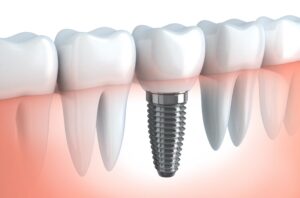
In addition to restoring chewing strength and stability, the dental field is a proponent of dental implants largely because of their ability to halt bone loss. Referred to as ‘resorption,’ this is the shrinking of bone mass, which occurs when tooth roots are no longer present in the jaw bone.
Once resorption begins, it continues at an ever-increasing rate with each year. For those who wear a denture or partial, the pressure an appliance places on the bone ridge accelerates it further. Sleeping in an appliance puts pressure on the ridge 24/7, speeding up the rate of bone loss even more.
Resorption can even be seen; it ages one’s appearance far beyond their actual years. As the jaw bone thins, deep wrinkles form around the mouth. Over time, the mouth appears to have sunk into the face. Jowls form and the chin becomes more pointed (creating a ‘granny look’).
Throughout all this, a denture or partial easily slips, requiring more frequent applications of adhesives or pastes. Relines may help for a time, but each reline will only help for a temporary time as the bone continues to decline in height.
Because dental implants are positioned in the jaw bone, they recreate stimulation, which helps them maintain healthy bone mass. They provide dependable, comfortable chewing and speaking ability. And, best of all, they’re designed to last a lifetime.
However, the goal is to avoid the devastation of gum disease. And, this begins at home. While your involvement with your general dentist is very important (with check-ups and cleanings every six months), daily care is a necessary part of having a healthy mouth, lowering disease risks, and keeping your natural teeth (or halting the pace of further tooth loss).
How can you improve your at-home care? There are several ways you can up your game with a few simple add-on’s…
Findings of an 11 year study published in the Journal of Clinical Periodontology tracked the oral health of over 2800 adults. Their use of ELECTRIC TOOTHBRUSHES was monitored to watch for periodontal disease, cavities, and the number of natural teeth.
Participants were examined in 2002 – 2006, with 18% being electric toothbrush users. Follow ups were conducted after 6 and 11 years. At the time of their 11 year follow up, 37 had converted to using electric toothbrushes.
The study showed electric brushing promoted better gum health and slower progression of gum disease. Electric tooth brushing also related to a reduction in tooth loss by 20% (compared to those who brush with manual toothbrushes).
Although manual tooth brushing can be just as effective, it must be done in a proper manner. For manual brushers, some manual brushes can actually be destructive used incorrectly.
For instance, a hard bristle tooth brush can wear down tooth enamel and gum tissues. Too, some people feel the need to press down firmly when brushing and tend to use a scrubbing, ‘back & forth’ motion. This action can wear down the protective shell of tooth enamel, leaving teeth more vulnerable to decay.
To avoid damaging tender gum tissues, choose a soft bristle toothbrush. As you apply gentle pressure on the brush, use a swirling motion. By using a circular pattern over both sides of each tooth and along the tops, teeth are cleansed without wearing away gum tissues. Hint: If the bristles on your toothbrush are fanned out after a couple of months, it’s because you are applying too much pressure when brushing.
Whether using a manual or electric tooth brush, it is necessary to brush twice a day for effective results. In order to thoroughly remove the sticky film of plaque from teeth, you should also brush at least two minutes each time.
Another way to improve gum health, lower cavity risk, and prevent tooth loss is through FLOSSING. It is estimated that only 31% of American adults floss on a daily basis. Because brushing cannot dislodge all food particles caught between teeth, daily flossing should be a part of oral hygiene routines.
Proper flossing is easy for those who are in the habit of it and takes less than a minute. However, the key word here is “proper.” Flossing is best done with about 18 inches of floss. We recommend unwaxed but people with tight teeth find waxed helps them avoid having to ‘pop’ in-between teeth, which can cut into tender gum tissues. Wrap both ends of the floss around the forefingers. Use the thumbs and middle fingers to help maneuver the floss.
Go slowly as you move the floss back and forth to get in-between and scrape down each tooth’s side several times. Move the floss just slightly below the line where teeth meet gum tissues to dislodge bacteria at the base of teeth. Adjust the floss so you have a clean section after flossing every 3-4 teeth. Be sure to scrape the backs of molars (or the farthest back teeth) on top and bottom.
For those who have problems with manual dexterity or find the maneuver awkward, WATER FLOSSERS are effective alternatives (shown to be just as effective as manual flossing) and easy to use. A water flosser pulsates a stream of water between teeth that is forceful enough to dislodge trapped food bits but without harming teeth or gums. They are affordable, available online or in many stores, and easy to use.
Finally, I’ll add the need to keep the mouth moist. A frequent state of ORAL DRYNESS can cause bad breath and lead to higher risks of cavities and gum disease. Saliva, the mouth’s natural rinsing agent, helps to cleanse oral bacteria from the mouth. This keeps bacteria to a minimum and their ability to cause problems at lower risk.
When saliva flow is insufficient, however, bacteria are able to accumulate and multiply rapidly. Contributors to having a dry mouth can occur from consuming alcoholic beverages, caffeine, many medications (both OTC and Rx) and is a normal part of the aging process. Some medical conditions, including acid reflux, sinus infections, diabetes and bronchitis can also cause dry mouth. A bad cold, snoring or just being in the habit of breathing through the mouth are drying as well. Smoking is a major cause of dry mouth.
To overcome the risks imposed by a dry mouth, drink lots of water throughout the day (sports drinks and colas don’t count). Use an ORAL RINSE that is formulated to replenish moisture in the mouth. There are several available over-the-counter (look for ones that DO NOT contain alcohol, which is very drying to oral tissues).
As an Asheville periodontist, I specialize in the treatment of all stages of gum disease, the re-contouring of gum tissues, and the diagnosis and placement of dental implants. Our periodontal dental office optimizes patient outcomes and comfort through our vast array of advanced technology and a commitment to exceptional care. Call (828) 274-9440 to schedule an examination or ask to begin with a consultation.
If dental fear has prevented you from achieving the healthy, confident smile you desire, ask about Oral and I.V. sedation (“twilight sleep”). These are safely administered and recovery is generally quick.
3 Things You’re Doing To Up Your Risk for Gum Disease
Posted on May 15, 2023 by William J. Claiborne, DDS MS
In life, we don’t know what we don’t know. As a periodontal specialist in Western NC, I see this a lot with adults who develop periodontal (gum) disease. Many go most of their lives unaware that certain things they’ve been doing all their lives led (or can lead) to the development of gum disease and often, tooth loss as a result.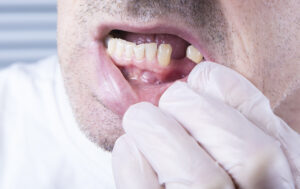
According to a report on the health of Americans (published by the CDC, the Centers for Disease Control & Prevention), it is estimated that over 47% have some form of gum disease. Although we all aspire to have a smile that is appealing, it is what lies beneath the teeth and gums that can wreak havoc on one’s overall health.
Over time, inadequate daily oral hygiene enables an overload of bacteria in the mouth. Oral bacteria are living, eating, and reproducing organisms, thriving on rotting food particles caught between teeth. They attack gum tissues and tooth enamel and eventually work down tooth roots and attack the bones and tendons that support teeth.
Early signs of gum disease are frequent bad breath along with swollen, tender and beefy red gums that bleed when you brush. As they grow in number, the gum tissues become weaker and they can penetrate the bloodstream.
Through tears in diseased gum tissues, this infectious bacteria can enter the bloodstream. This potent bacteria are now associated with a number of serious health conditions due to their ability to trigger systemic inflammation. These include heart disease, stroke, some cancers, Alzheimer’s disease and more.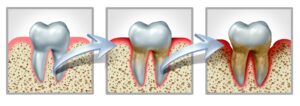
According to the American Academy of Periodontology (www.perio.org),
“Several studies have shown that periodontal disease is associated with heart disease. While a cause-and-effect relationship has not yet been proven, research has indicated that periodontal disease increases the risk of heart disease.
“Scientists believe that inflammation caused by periodontal disease may be responsible for the association.
“Periodontal disease can also exacerbate existing heart conditions. Patients at risk for infective endocarditis may require antibiotics prior to dental procedures. Your periodontist and cardiologist will be able to determine if your heart condition requires use of antibiotics prior to dental procedures.”
Obviously, the goal is to prevent the onset of gum disease. This can be done easily with the investment of just minutes per day and regular dental check-ups and cleanings. The following can give you a good idea as to what you may be doing to make you vulnerable and how to lessen your risks.
• FREQUENT SNACKING
Snacking has become pretty common over the years. Many Americans snack, with such things as a mid-morning latte or afternoon candy bar topped off by a bowl of ice-cream after dinner. All these add-in’s to three meals a day lead up to a bombardment of oral acids in the mouth.
Anytime you eat or drink, an acid attack begins in the mouth. This is a normal part of the digestive system, starting the break-down of foods during the chewing process. However, this also means that every sip of cola or bite of granola bar, an acidic bombardment occurs in the mouth for about 20-30 minutes. When the mouth endures frequent acid attacks during the day, damage to precious tooth enamel will lead to cavities.
Although Americans are the leading nation for sugar consumption, carbs also break down as sugar in the mouth. This means that the potato chips and popcorn you munch on are adding to these risks as well.
• ORAL DRYNESS
Xerostomia, commonly known as “dry mouth,” is a frequent state of oral dryness. Saliva is your mouth’s natural rinsing agent that helps cleanse oral bacteria from the mouth. This keeps bacteria to a minimum.
When saliva flow is depleted, bacteria linger in the mouth longer, giving them more time to multiply. As oral bacteria thrive, reproduce and amass, the initial result is plaque. Plaque is the sticky film you can feel on teeth.
Periodic dry mouth can occur from consuming alcoholic beverages, coffee and certain medications. Although sugary drinks don’t necessarily dry oral tissues (unless they contain caffeine), sugar enhances growth of bacteria reproduction. When food and beverages contain caffeine AND sugar, this hits the mouth with an even higher risk for oral bacteria growth.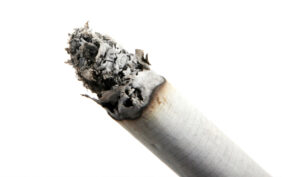
Other causes of dry mouth include medications, such as antihistamines and some prescribed for depression and urinary incontinence. Medical conditions, including acid reflux, sinus infections, diabetes and bronchitis are also contributors. A bad cold, snoring or just being in the habit of breathing through the mouth are drying as well. And – the worst culprit of all – is smoking.
• INADEQUATE ORAL HYGIENE AT HOME
Bacteria are living organisms that eat, reproduce and emit waste. Their ability to reproduce is astounding, resulting in a consistently growing number of waste-producing creatures. And they stink, causing bad breath.
Poor oral hygiene is the most common cause for bad breath. Not brushing and flossing or doing so adequately allows oral bacteria to reproduce, which leads to plaque.
When plaque is not removed thoroughly on a daily basis, it turns into a cement-hard substance known as tartar. This mass is actually a solid colony of oral bacteria that attaches to teeth. Once in the form of tartar, it can no longer be brushed or flossed away.
Tartar attacks enamel and gum tissues, causing the gum tissues to become inflamed. This inflammation can quickly develop into gingivitis, an early form of gum disease. If not resolved fully, however, gingivitis can lead to full-blown periodontal disease.
It is estimated that nearly a third of American adults brush their teeth for an insufficient amount of time. Even worse, about that same amount fail to brush twice a day. This means that an alarming amount of bacteria remain to grow and thrive in the mouth.
Proper brushing includes brushing for at least two minutes twice daily with thorough swishing afterwards. Brush using a circular motion rather than scrubbing teeth back and forth (which can damage and wear away tender gum tissues). Never use a hard bristle tooth brush or brush with harsh substances (such as baking soda).
You may be surprised to learn that brushing only tackles about half the amount of oral bacteria. The tongue actually harbors 58 – 65 percent of the bacteria in the “oral cavity.”
Oral bacteria, which take up residence in the tiny bumps and grooves of the tongue, are not easily dislodged. Thus, it is necessary for tongue cleaning to be a part of your oral hygiene regimen at home.
Some toothbrushes have a “tongue scraper” on the reverse side of the bristles that’s an effective option. Or, you can brush your tongue with the bristles after your teeth are brushed. Be sure to reach towards the back of the tongue where the majority of bacteria exist.
If you are experiencing symptoms of gum disease or have not received regular dental care, call 828-274-9440. We’ll arrange a periodontal exam in our comfortable Asheville periodontal office. Or, you can request a consultation appointment to begin. This time will allow you to get to know us and our advanced technology, often saving our patients treatment time while enhancing comfort.
If financial constraints are a concern, ask about our easy payment plans. These can break treatment fees into monthly payments that are manageable to most budgets.
Amazing Technology In Treating Gum Disease
Posted on May 09, 2023 by William J. Claiborne, DDS MS
Recently, an episode of the CBS News’ television program “60 Minutes” provided an in-depth update on the development of prosthetic limbs. Now “robotic” in description, advancements are making it possible for people with spinal cord injuries and amputations to control prosthetic limbs with their minds, including grasping objects.
What is miraculous, however, is how these advanced prosthetics can also restore a sense of touch to their brains. The decades-long project is due in most part to the Defense Department.
https://www.gao.gov/products/gao-22-106118
Technology today is remarkable. Advancements are moving forward at an impressively accelerating pace. We are witnesses to the the repair and rejuvenation of bodily parts in almost a “good as new” state. This is also true in the area of dental technology.
A periodontist is often a “behind the scenes” dental specialist, working with general dentists and various other dental specialists. While periodontists may be in the background, they stay busy. In addition to treating all stages of gum disease, these specialists have advanced skills in the placement of dental implants.
It is estimated that over 47% of American adults have some level of periodontal (gum) disease. This disease is the nation’s number one cause of adult tooth loss. However, gum health needs to be seen by the general population as a vital player in one’s overall health.
The destruction of periodontal disease is not just confined to the mouth. It spreads. Gum disease destroys bone structures below the gums. These structures are the upper and lower jaw bones, which support natural tooth roots.
The jaw bones are actually kept healthy by the presence of tooth roots. These roots provide stimulation to the bone as well as nourishment that feeds through the tooth’s interior.
By holding their roots securely, the jaw bones provide natural teeth with a sturdy foundation. This enables the ability to bite and chew comfortably and dependably.
However, when a natural tooth is lost, so is the stimulation and nourishment to that area of the jaw bone. Without it, the bone begins to shrink. As it declines in mass, the adjacent teeth are more vulnerable to loss. Statistics show that teeth adjacent to areas where natural teeth are missing will be the most likely to be lost next. This creates somewhat of a domino effect.
Dental implants were designed to recreate the presence of natural teeth both above and below the gum line. Because teeth attached to dental implants are supported by the jaw bones, the study foundation as was had by natural teeth is restored, along with the ability to bite and chew without movement or embarrassment when dentures (or partials) slip.
In addition to tooth loss, gum disease is a serious health threat. Although people are often aware of the issues that come with wearing dentures and partial, many are not familiar with the health problems associated with gum disease bacteria.
This infectious bacteria of gum disease are capable of causing inflammatory reactions elsewhere in the body. Systemic inflammation is the now-known epicenter of a number of major health problems, including heart disease, stroke, high blood pressure, diabetes, arthritis, impotency and more.
Whether the patient’s need is the restoration of gum health or the replacement of missing teeth, the advanced skills of a periodontist can be highly advantageous. Through their unique understanding, they can help to minimize treatment time and complexity of treatment.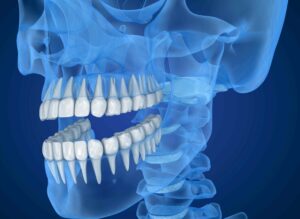
In our Asheville NC periodontal dental office, we feature some of the most advanced imaging and computerized technology available in the industry. These include:
LANAP Protocol Using PerioLase MVP-7: Efficiently and effectively treats periodontitis (advanced gum disease) with laser technology. It causes very little discomfort and has a quick recovery time. This has also been found to stimulate bone regrowth in damaged areas.
Dental Radiology With 3-D Cone Beam Technology: This imaging is ideal for diagnosis and treatment planning. The imaging covers the entire dentition area with clear views of the mandible and maxilla (upper and lower jaw).
CareStream Cone Beam Computer Tomography Imaging: This computerized tomography provides imaging in exceptional detail and range.
CS 3600 intraoral scanner: Patients no longer have to endure having impressions made with bulky, gloopy trays held in their mouths! This quickly and comfortably scans the mouth’s interior for digital impressions using a small, handheld scanner. It can also reach difficult–to–access areas in the patient’s mouth with improved patient comfort.
Simplant Dental Software for Computerized Dental Implant Placement: This system helps in pre-surgical positioning of dental implants on the computer, using a 3D model of the patient’s jaw. This aids in the selection of the implant type that ensures a precision fit.
Intraoral Camera Technology: This provides outstanding quality of images within the mouth. These images are sent to screen for a clear, crisp view so we can confer with patients on specific treatment issues.
Computer Imaging In Treatment Suites: Treatment suites are equipped with computers for convenient image sharing with patients.
Advanced Sterilization: Our custom sterilization unit adheres to (or exceeds) CDC guidelines for instrument processing protocols, particularly in the cleaning of instruments.
Fully-Equipped Surgical Suites: Relax during treatment while surrounded by beautiful mountain views of Asheville.
My staff and I also take great pride in providing patients with optimal comfort, along with an environment of respect. Some adults comes to us embarrassed by the condition of their oral health or missing teeth. Here, we strive to make patients feel they are not only in the right hands, but they are in the right place.
Comfort is supported by our sedation options. These include oral and I.V. sedation. Also referred to as “twilight sleep” or “sleep dentistry,” these sedatives are administered by skilled professionals who utilize advanced safety monitoring equipment.
I believe that the rampant number of people who have gum disease in the U.S. is largely in part due to being unaware of the symptoms. Some are easily ignored or “brushed off” as normal.
This is why it is important to be familiar with the signs and symptoms, which include:
• Red, swollen or tender gums or other pain in your mouth
• Bleeding while brushing, flossing, or when eating certain foods
• Gums that are receding (pulling away from the teeth) or make the appear teeth longer than normal
• Loose or separating teeth
• Pus between your gums and teeth
• Sores in your mouth
• Persistent bad breath
• A change in the way your teeth fit together when you bite
• A change in the fit of partial dentures
If you have any of these, you are urged to seek periodontal care as soon as possible. This disease will only worsen without treatment.
Call 828-274-9440 to schedule a consultation in our state-of-the-art Asheville periodontal dental office.
Older Adults (80’s, 90’s, 100’s) Benefit By Dental Implants
Posted on Apr 25, 2023 by William J. Claiborne, DDS MS
Someone once told me, “Old age is always ten years older than the age you are at the time.” I get it. While a teenager may think of anyone over the age of 55 as “old,” aging in the U.S. today has taken a positive position within America’s population.
Proof of this is in how more and more people are living to be 100. Many of them are still sharp and spry. Although reaching the 100 age pinnacle was once a rare feat, it’s a growing trend. Today, there are nearly twice as many 100+ year olds in the U.S. than there were 20 years ago (nearly 90,000 now).
Reaching these elevated ages, of course, depends on factors like location, gender, lifestyle and genetics. Living a long life has evolved from lifestyle changes rather different than what was taken for granted in the 1950’s, for example.
Between 1900 and 2020, life expectancy in the U.S. rose by more than 30 years. Much of this can be credited to life choices, such as things like not smoking. Smoking, a leading contributor to heart disease, can decrease life expectancy by 10 years.
In 1965, 45% of Americans smoked. Now, knowing the health hazards to smoking, the number has declined to only 12.5% as of 2020.
Of course, Americans can also credit medical advances for the centenarian growth in population. The survivability of things like heart attacks and cancer has greatly increased, giving adults a longer lifespan.
As Americans realize their lifespan may well reach age 90, 100 or beyond, the resistance to having dental implants due to “old age” is becoming less of a factor.
Dental implants are the ideal tooth replacement system. Unlike dentures or ‘partials,’ dental implants are supported by the jaw bone, just as natural teeth. While dentures sit on top of the gums, dental implants restore biting strength and stability, giving back the look, feel and function of the teeth you once had.
Two decades ago, some “older” adults would deny themselves the benefits of dental implants, saying things like, “I’m too old to spend that amount of money on myself.” Yet, for my dental implant patients in their 80’s and 90’s, I never had one who didn’t feel it was one of the wisest investments they’d ever made.
Here’s why…
– Dental implants are designed to last your lifetime. They do not decay, need root canals or compromise neighboring teeth or bone structure.
– Because dental implants are positioned in the jaw, they recreate stimulation to the bone. This helps to preserve the bone’s mass, halting the pace of jaw bone shrinkage (known as resorption).
– Resorption is what causes changes in one’s facial appearance, aging one’s appearance far older than their actual age.
– Dental implants do not move or slip when eating, speaking or laughing. A denture is designed to fit the contours of one’s gum ridge; contours that exist at the time the denture is made. However, as resorption reduces bone height, the ridge that holds the denture flattens out over time. This is why a denture becomes ‘wobbly’ or ‘slippery.’
– Dental implant treatment is largely determined by the number of implants placed. In most cases, one implant can support more than one tooth. A full arch (all upper or lower) of teeth are typically supported by several strategically-placed implants.
– Unlike a crown-&-bridge, dental implants so not need the support of adjacent teeth. Therefore, it is not necessary to have teeth shaved down for crowning simply to serve as supports for a bridge.
When it comes to dental implants, there are many decisions and choices that can become confusing without the guidance of a dental specialist. For example, there are over 40 different implant systems.
Dental Implants are designed in a variety of shapes and sizes to accommodate various needs. For those who are missing all upper or lower teeth, for instance, some implant types can support a full arch of removable teeth while others support non-removable (or ‘fixed’) teeth.
As a periodontist for over 3 decades, our patients receive advanced skills in dental implant diagnosis and placement. Additionally, our Asheville periodontal dental office features some of the most advanced technology in the industry today. This includes computerized imaging that can lessen treatment needs, optimize comfort and speed healing.
If you feel you are too old to make this wise investment, check out some of the health benefits that dental implants provide:
• As the ‘arch’ (or ridge) flattens, the appliance is more apt to move while chewing. As the denture rubs against tender gum tissues when eating, sore spots form, which are difficult and slow to heal. And, when small seeds or nut particles become trapped between the appliance and gums, it can cause a piercing, painful sensation.
This discomfort and concern often prompts people to adjust their diets. The chewy, crunchy foods they once enjoyed tend to be bypassed for those that dissolve quickly with minimal chewing required. Unfortunately, these foods are typically lacking in the fiber, vitamins and protein necessary for a healthy diet.
• The gum-colored base of dentures or partials that hold the replacement teeth is made of a porous material. This means there are tiny holes in the base. In the mouth, a denture sits in a warm, dark, moist environment – perfect for bacterial growth. These holes become living spaces to oral bacteria, which thrive and breed at a rapid rate. Bad breath and increased risk of pneumonia are actually some of the lesser problems that can occur.
Additionally, oral bacteria can create havoc throughout the body. It is a known contributor to a long list of serious health diseases and conditions. These include some cancers, stroke, heart disease, diabetes, arthritis, Alzheimer’s disease, pre-term babies and many more.
• The insecurity of a denture that may move when eating causes some people to avoid social gatherings. The fear of embarrassment can be a deterrent to involvement with friends and family. This places the individual at a disadvantage, as research shows that socially active seniors age more slowly than those who avoid social interactions.
If dental fear has prevented you from looking further into dental implants, please know that we have a reputation for respect, a gentle touch, and compassionate care. Additionally, we offer Oral sedation as well as I.V. sedation (also known as ‘twilight sleep’). These are administered safely by a doctor of anesthesia who monitors patients with advanced safety equipment.
Also, financing can be easy through monthly payment plans. Most are interest-free with no down payment required.
To schedule a consultation appointment, call 828-274-9440. Also, get to know more about dental implants at: DrClaiborneDentalImplants
Sources:
https://www.sciencedaily.com/releases/2014/10/141007144514.htm
https://greatergood.berkeley.edu/article/item/how_social_connections_keep_seniors_healthy
Recent Posts
Categories
Archives
- September 2024
- August 2024
- July 2024
- June 2024
- May 2024
- April 2024
- March 2024
- February 2024
- January 2024
- December 2023
- November 2023
- October 2023
- September 2023
- August 2023
- July 2023
- June 2023
- May 2023
- April 2023
- March 2023
- February 2023
- January 2023
- December 2022
- November 2022
- October 2022
- September 2022
- August 2022
- July 2022
- June 2022
- May 2022
- April 2022
- March 2022
- February 2022
- January 2022
- December 2021
- November 2021
- October 2021
- September 2021
- August 2021
- July 2021
- June 2021
- May 2021
- April 2021
- March 2021
- February 2021
- January 2021
- December 2020
- November 2020
- October 2020
- September 2020
- August 2020
- July 2020
- June 2020
- May 2020
- April 2020
- March 2020
- February 2020
- January 2020
- December 2019
- November 2019
- October 2019
- September 2019
- August 2019
- July 2019
- June 2019
- May 2019
- April 2019
- March 2019
- February 2019
- January 2019
- December 2018
- November 2018
- October 2018
- September 2018
- August 2018
- July 2018
- June 2018
- May 2018
- April 2018
- March 2018
- February 2018
- January 2018
- December 2017
- November 2017
- October 2017
- September 2017
- August 2017
- July 2017
- June 2017
- May 2017
- April 2017
- March 2017
- February 2017
- January 2017
- December 2016
- November 2016
- October 2016
- September 2016
- August 2016
- July 2016
- June 2016
- May 2016
- April 2016
- March 2016
- February 2016
- January 2016
- December 2015
- November 2015
- October 2015
- September 2015
- August 2015
- July 2015
- June 2015
- May 2015
- April 2015
- March 2015
- February 2015
- January 2015
- December 2014
- November 2014
- October 2014
- September 2014
- August 2014
- July 2014
- June 2014
- May 2014
- April 2014
- March 2014
- February 2014
- January 2014
- December 2013
- November 2013
- October 2013
- September 2013
- August 2013
- July 2013
- June 2013
- May 2013
- April 2013
- March 2013
- February 2013
- January 2013
- December 2012
- November 2012
- October 2012
- September 2012
- August 2012
- July 2012
- June 2012


